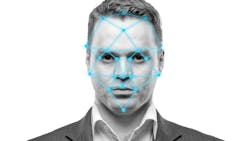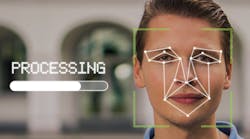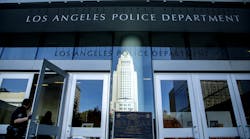Law enforcement agencies are continuously confronted with new challenges each day—but technology innovations can help meet them.
One such technology is facial recognition, a computer application that makes it easier for law enforcement agencies to identify suspects from a digital image using the science of biometrics. In the most basic terms, a facial recognition application matches a probe image to an existing gallery of images. The application then uses an algorithm to compare the probe image with the gallery and returns a list of possible match candidates.
In public safety, facial recognition is used to generate a strong investigative lead by streamlining standard investigatory techniques with technology. It must never be used to definitively conclude that a face matches an identity, and an arrest must never be made solely based off of the results of facial recognition software.
While its technology is grounded in science, facial recognition requires a great deal of manual analysis and an image of a certain quality to make a possible match. In the end, it’s a lead that still needs to be verified and followed up with good old-fashioned police work with a thorough investigation. It’s not a smoking gun, but it can provide a viable starting point in any investigation where an unknown suspect or person of interest in an image needs to be identified.
Accuracy often depends on image quality and facial recognition is not as definitive as DNA. However, this technology has already proven it is highly valuable to law enforcement officials trying to generate better leads and close more cases, but not everyone agrees with how it’s being used by law enforcement. Because of this, law enforcement needs to educate themselves on facial recognition technology, understand the arguments made by those against it, and position themselves to better defend any public safety reasons for using it.
Facial recognition use by law enforcement
Here’s how it works: Facial recognition software quickly compares one face with a lot of other faces to see if there is a potential match. That’s it. Today, the law enforcement community does this every day in a manual way, by knocking on doors with a photo, or having crime victims look through hundreds of mugshot photos. Facial recognition just automates this process.
This technology does not replace anything in criminal investigations except for time and effort—and when used properly, it is a valuable tool in the investigative process that can generate a strong investigative lead.
Step 1: Identify the image. After a camera captures an image and is submitted for a search, it must be vetted by the examiner to determine if it meets the criteria for facial recognition in pose, lighting and overall quality. Controlled images, like those found on photo identifications, are ideal and can be immediately enrolled to run a search against a gallery of faces.
Images that do not meet the minimum criteria for facial recognition searching because they are very poor in quality (low resolution or grainy), causing the examiner to not be able to identify any definitive facial landmarks, should immediately be rejected by the system and the facial examiner. A general rule of thumb: If the facial examiner can’t see a face in the photo, the facial recognition software can’t see it either.
Uncontrolled images are the real challenge. These are images that are good in resolution and lighting, but may pose challenges because of other factors, such as angled poses or occlusion (objects blocking parts of a face). These are often rejected by the software but can still produce a match with the right approach. They may still qualify for facial recognition searching if the examiner identifies the issue within the image and selects the right set of pre-processing image enhancement tools. Once the enhancements are made by the examiner and the image meets the criteria for searching, an examiner may enroll the image and can obtain a possible match.
Step 2: Apply data filters to a search. An investigator can narrow the list of returned possible match candidates by using filters, such as gender, race, physical descriptors or location. This narrows the pool of candidates to levels of specificity, making for higher accuracy rates.
Step 3: Facial identification. An investigator may receive hundreds of possible candidates for a match after a search has been executed. The next step is human analysis of each photo to select the best possible candidate from the pool returned. It is important to note that the possible match position relies heavily on the original probe and gallery image quality, the size of the database, the filters used by the examiner and the enhancements made by the examiner. Because all the “stars” vary and no search is ever the same, a sole reliance should never be on the software. The results still require human review. This includes, but is not limited to, looking for definitive facial features, such as scars, moles, marks and tattoos, as well as the shape of the hairline, hair texture, mouth and ears. These features tend to remain consistent over the years and allow for an easier visual scan of faces in the returned list of candidates, making the “possible match” candidate a stronger choice based on physical characteristics.
Step 4: Verify the choice. When the physical characteristics align and a possible match candidate is selected from the gallery, a recommended best practice involves two levels of verification. The first level is an immediate background investigation of the possible match candidate, checking for incarceration status, criminal background, residence in relation to the crime location and any modus operandi. Careful review and analysis of these factors strengthens the investigation and will solidify or discredit a potential possible match candidate. The goal is to reasonably place the suspect at the crime through background checks.
Once the physical and background investigation makes the candidate viable, a secondary level peer review using three to five colleagues is recommended. Why? Because some people “see faces differently,” so it is always best practice for an investigator to present a possible match to other peers, demonstrating all the physical similarities match, differences may have been identified, and a thorough background check has been completed. The peer review popular vote makes it a possible match.
Step 5: The possible match. It is always best practice to generate a formal report, which includes all images used (the original probe, the enhanced image if applicable, and the candidate mugshot), and all the pedigree information associated with the investigation including: who ran the search, the reasons why, all pedigree information available for the candidate, any enhancements made to the image, and any identifiable facial landmarks found in the face comparison must be annotated.
Once all these steps are performed and qualifications are met, the investigator generates an investigative lead and probable cause for arrest must be established in the case by other investigatory means.
Some say facial recognition may lead to false arrests, but a possible match is just a lead
Despite the remarkable advancements in facial recognition software, the technology should only be viewed as a reliable and credible investigation lead generation tool; a match report should never lead directly to an arrest. The onus falls on each agency to verify a person’s identity independent of the facial recognition application. Facial recognition should only be used in conjunction with other standard law enforcement procedures to verify someone’s identity.
As a retired detective who has successfully analyzed and processed thousands of images to generate quality leads in criminal investigations using facial recognition technology, I can firmly attest when law enforcement agencies follow these recommended best practices, we’ll move closer to an atmosphere that accepts facial recognition technology for what it is: a better way to generate viable leads, close more cases, solve more crimes and ensure public safety.
About the author: Roger has served more than 20 years with the NYPD, where he spearheaded the department’s first dedicated facial recognition unit and helped develop the Real Time Crime Center. He is currently Director of Business Development at Vigilant Solutions and Subject Matter Expert in Facial Recognition Use in Law Enforcement. He can be reached at [email protected].



